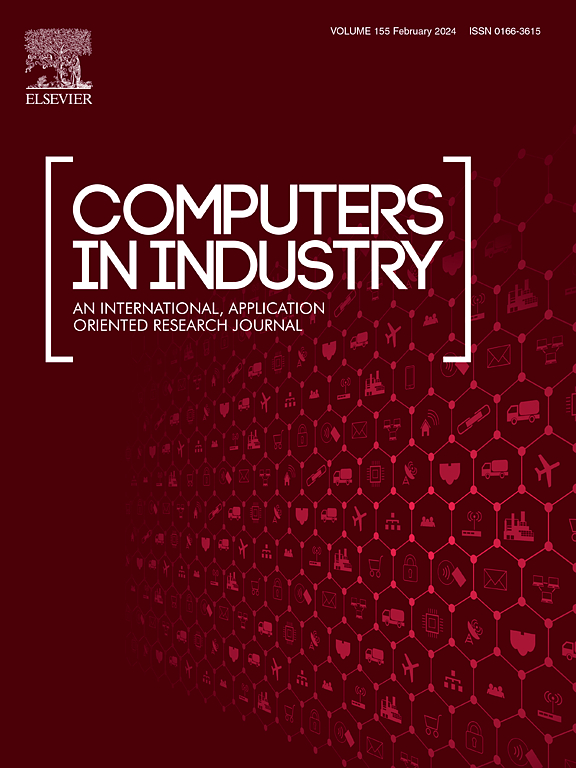基于人工智能的自适应因果控制方法:锡膏印刷的自动化工厂
IF 9.1
1区 计算机科学
Q1 COMPUTER SCIENCE, INTERDISCIPLINARY APPLICATIONS
引用次数: 0
摘要
近年来,工业环境中出现了从自动化工厂到智能生产的显著转变,人工智能(AI)等技术加速了这一转变。最终目标是一个能够自我调节和自我优化的自主植物。在电子产品生产中,已经提出了在印刷电路板表面贴装技术生产中为锡膏印刷导出和调整机器参数的第一种方法。然而,这些方法通常是静态的,并且执行反应性操作,因为它们要么基于专家系统,要么基于数据驱动的模型。为了达到动态优化,本工作提出了一种称为自适应人工智能因果控制的方法,允许离线和在线优化。遵循六西格玛设计方法的原则,导出了以客户为导向的关键绩效指标,旨在通过关注焊料量的分布和专用的整体分布度量来实现稳定的焊接过程。离线优化(开环控制)是基于代理模型方法来寻找最优的初始打印参数。在线优化(闭环控制)采用数据驱动模型预测控制动态调整打印参数。此外,为了考虑在线优化过程中控制变量的因果关系,在预测控制器中使用了因果图。关于开环控制的有效性,我们的评估显示,生产中的传播减少了11.3%。此外,在闭环控制的有效性方面,我们在预测控制器的模拟设置中获得了体积范围减少16.7%的效果。因此,基于生成的因果图的因果推理组件的集成,通过考虑与领域专家识别的过程知识,达到76.9%的召回率,约占召回率的2.8%。本文章由计算机程序翻译,如有差异,请以英文原文为准。
A methodology for adaptive AI-based causal control: Toward an autonomous factory in solder paste printing
In recent years, there has been a remarkable shift from automated plants to intelligent production in the industrial context, accelerated by technologies such as artificial intelligence (AI). The ultimate goal is an autonomous plant that is capable of self-regulation and self-optimization. In electronics production, the first approaches have been proposed for deriving and adjusting machine parameters for solder paste printing in the surface-mount technology production of printed circuit boards. However, these approaches are often static and perform reactive actions since they are either based on expert systems or data-driven models. To reach a dynamic optimization, this work proposes a methodology, called adaptive AI-based causal control, allowing offline and online optimization. Following the principles of the Design for Six Sigma method, customer-oriented key performance indicators were derived, that aimed at a stable soldering process by focusing on the spread of the solder volume and a dedicated overall spread metric. The offline optimization (open-loop control) is based on a surrogate model approach to find optimal initial printing parameters. The online optimization (closed-loop control) employs a data-driven model predictive control to adjust the printing parameters dynamically. In addition, to consider the causal effects of the control variables in the online optimization, a causal graph is exploited in the predictive controller. Regarding the effectiveness of the open-loop control, our evaluation reveals a reduction in spread by 11.3% in production. Furthermore, in terms of the efficacy of the closed-loop control, we obtain a reduction in volume range by 16.7% in a simulated setting of the predictive controller. Thereby, the integration of a causal inference component based on a generated causal graph, achieving a recall of 76.9% by considering process knowledge identified with domain experts, accounts for about 2.8% of the recall.
求助全文
通过发布文献求助,成功后即可免费获取论文全文。
去求助
来源期刊

Computers in Industry
工程技术-计算机:跨学科应用
CiteScore
18.90
自引率
8.00%
发文量
152
审稿时长
22 days
期刊介绍:
The objective of Computers in Industry is to present original, high-quality, application-oriented research papers that:
• Illuminate emerging trends and possibilities in the utilization of Information and Communication Technology in industry;
• Establish connections or integrations across various technology domains within the expansive realm of computer applications for industry;
• Foster connections or integrations across diverse application areas of ICT in industry.
 求助内容:
求助内容: 应助结果提醒方式:
应助结果提醒方式:


